Author’s note: A hat tip goes to Brian in Jeollanam-do for discovering this place and sharing it with the K-blogosphere.
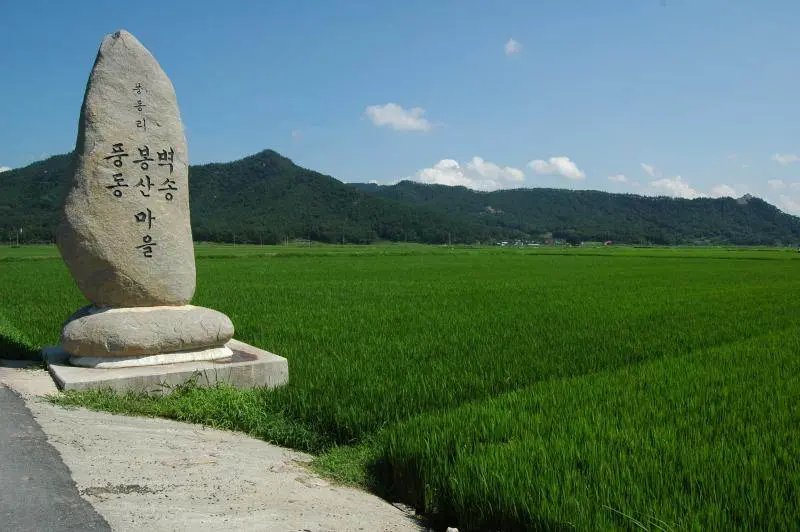
The middle of nowhere seems the best place to place a Buddhist temple. Far away from the distractions of the world and sounds of the city is this fine example, neatly divided into two sections for your viewing pleasure. The first half seems a bit older compared with the immaculate condition of the second half – and the connecting road is a bit… incongruous.
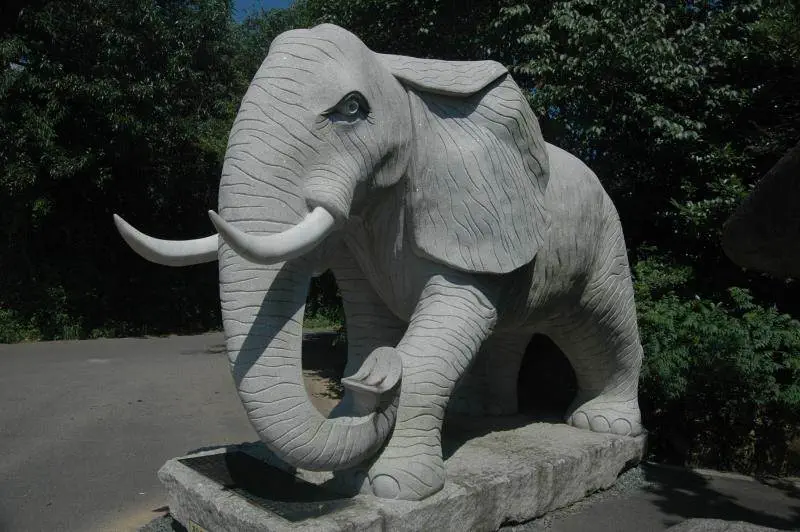
Before even entering the temple, you’ve already begun seeing the Buddhist symbolism of white elephants.
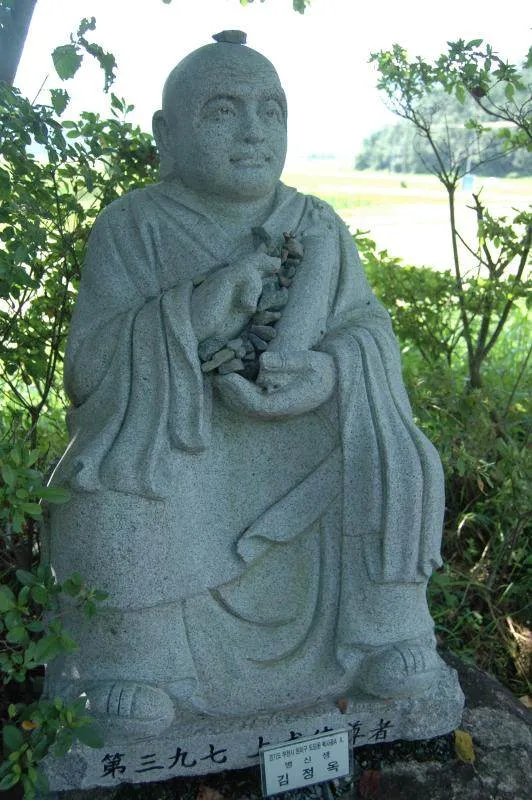
A wonderful treat, if a mysterious one – literally hundreds of different monks are immortalized in statue form. Each one is different, although the tags underneath each statue show their name and the address of their temple. There’s no sign around to indicate who these people are, and what they did to be enshrined here, however. This one is only partially hidden by the foliage; others are almost invisible from the gravel path unless you know where to look beneath it all.
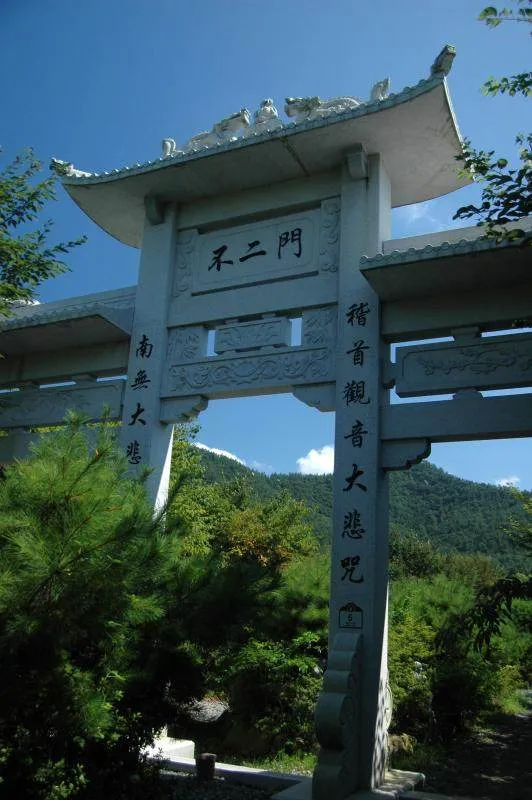
A very new front gate – curiously, it welcomes the guests with Chinese characters.
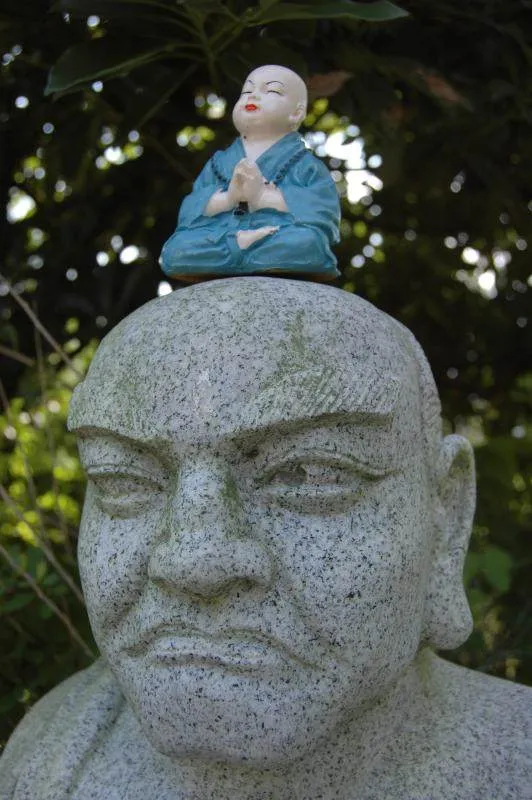
The juxtaposition of these two elements is priceless.
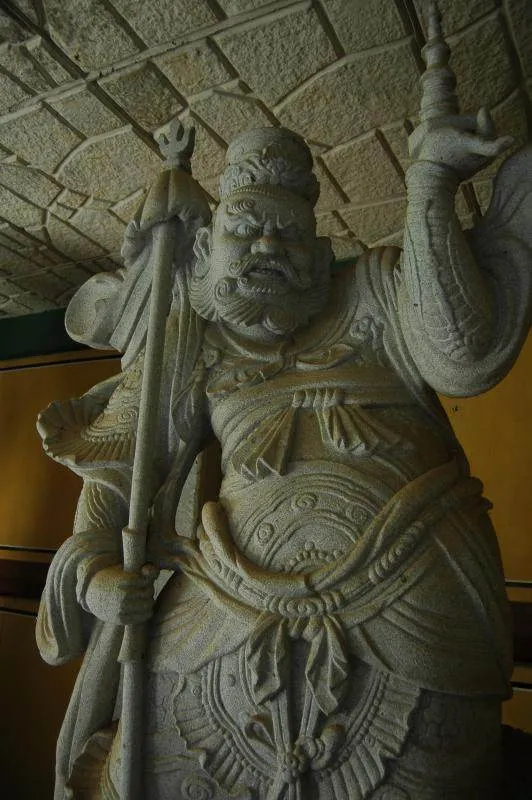
Presenting one of the four deva. There are plenty of other symbols of the deva around the temple area, but this three-meter-tall statue guards the entrance from evil spirits.
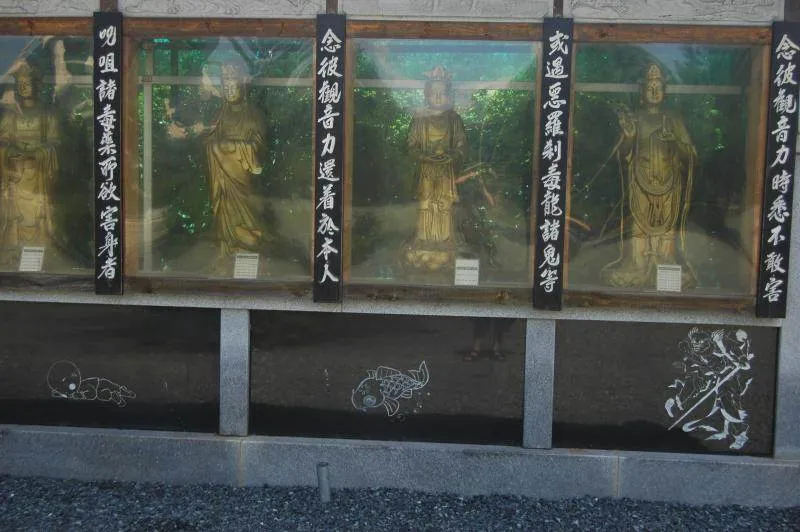
Another sort of mystery – why on earth were these monks in a plastic box with an open back is beyond me…

A dragon of fortune (?), holding a pearl in its mouth. Not pictured in this stretch is a dirt path through the village. The temple feels rather rich, while the connecting village seemed little more than a third-world country.
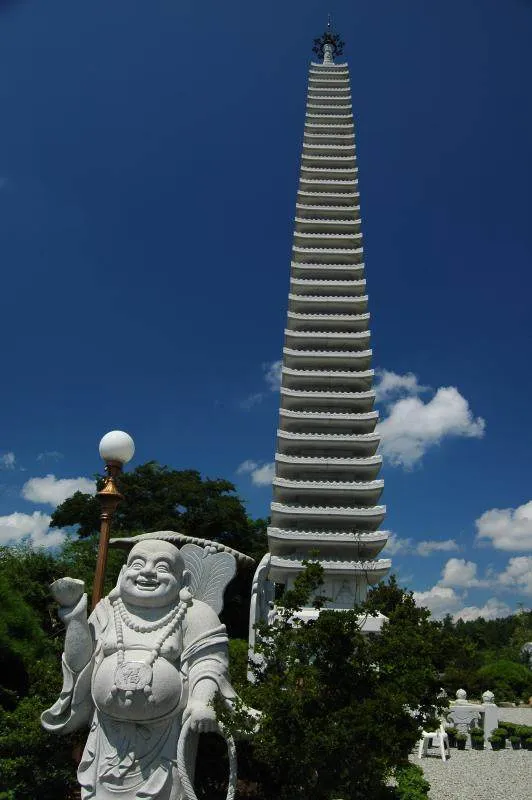
Start counting the tiers in the pagoda. The symmetry is beautiful, to say the least, but there’s no English signage anywhere to explain things.
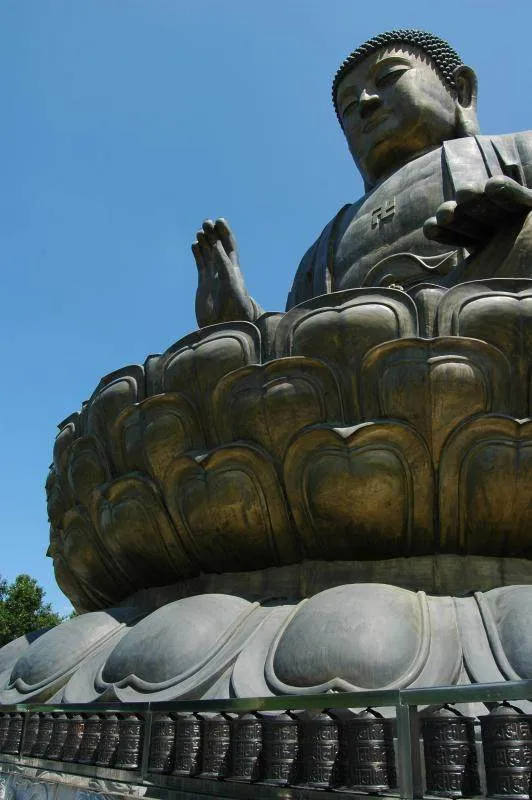
The pièce de résistance – the biggest Buddha in Korea. At 36 meters tall, he sits about 110 feet tall, is made of bronze, and weighs quite a bit.
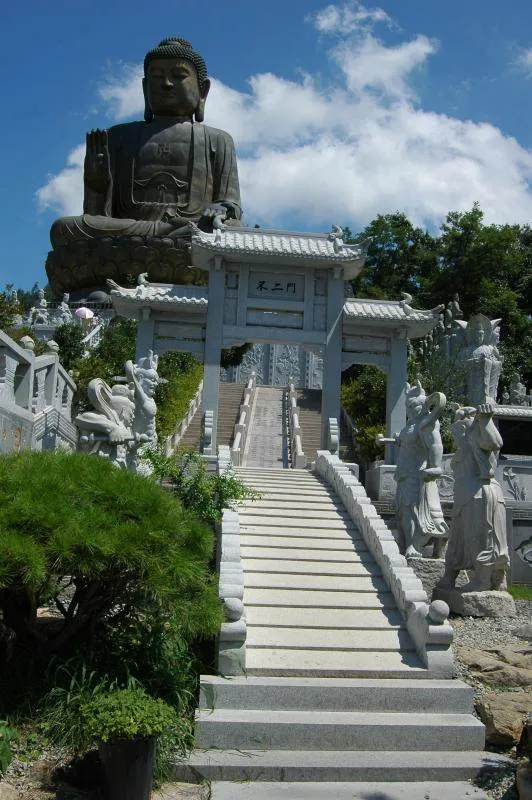
He’s not alone, of course – literally hundreds of other statues are around in sizes small and large. Again, no explanations of any kind.
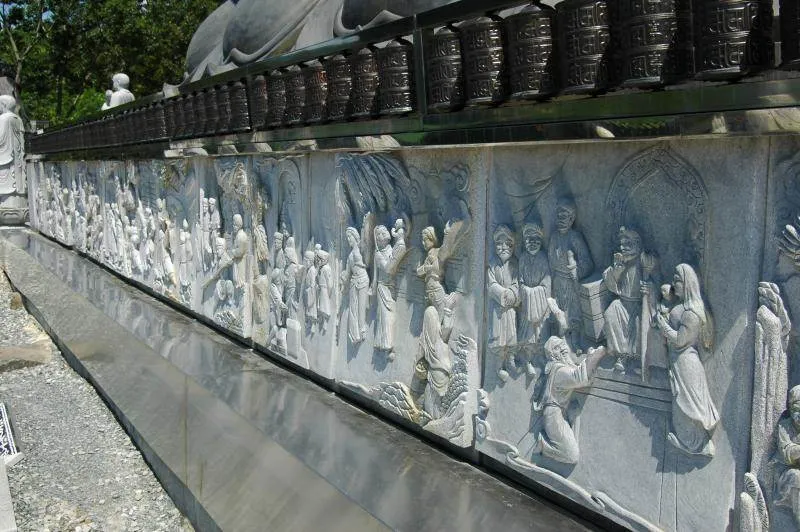
Traditional prayer wheels, complete with a Buddhist prayer in Sanskrit and four Chinese characters at the top of every wheel. They surround the giant Amitabha Buddha statue. Turn each prayer wheel and go around at least three times for the full effect.
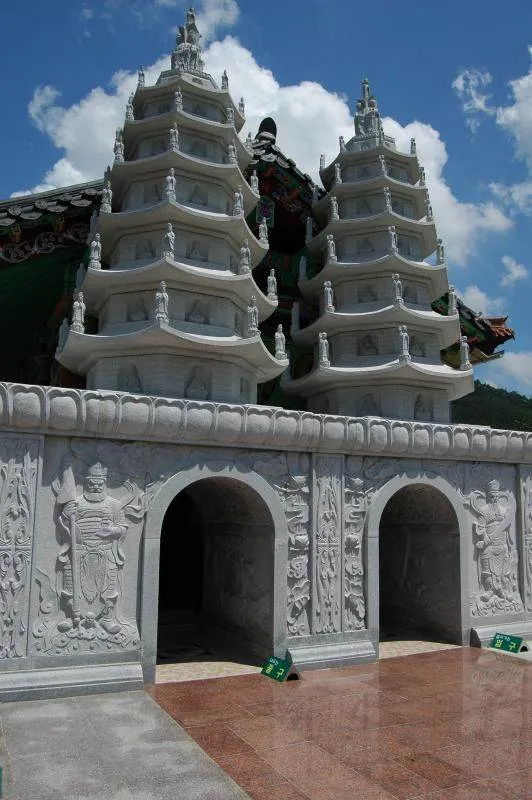
Definitely feels different from any other Korean temple I’ve been to before. I’ll admit to knowing very little of its history, but there sure seems to be a lot of international influences. The shiny marble floor led to a hall’s entrance.
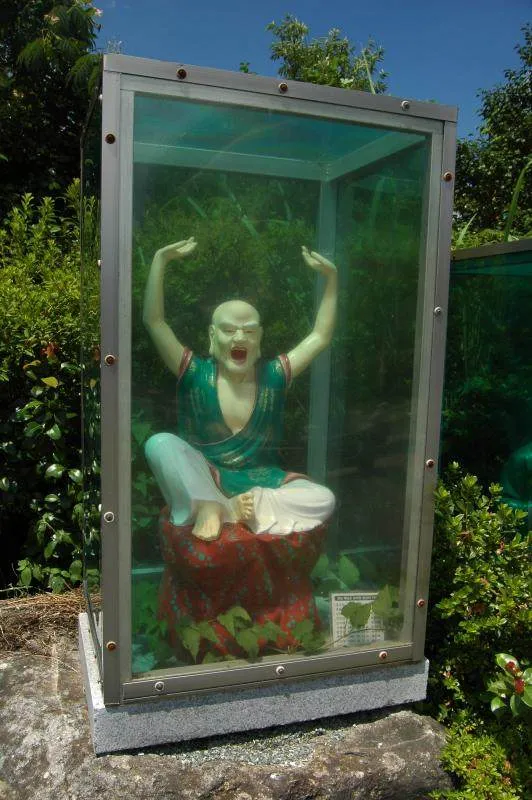
I love these characters – returning just to see these guys may need to be arranged at some point in the future. It’s beautiful, serene, and definitely large enough to keep you busy for a couple of hours. Getting there is half the trick (see the directions below!), but it’s definitely worth the trouble to reach.
GoneSeoulSearching.com has some great directions on how to get there.



I'm not exaggerating when I say half my comments nowadays are spambots (many of which are Chinese).
Anyway, thanks for the link, Chris, and I'm glad you found it okay. Except for the couple posts I did, I've found nothing about it in English. The statue is quite new as is that half of the grounds, but I'm not sure what significance the temple had before. I'm also very interested to know where it got the money for the statue and the other new features. It and the decorations are, interestingly, both the result of a lot of money and the cause for a lot of new donations. The temple is still very much off the beaten path, though, for Koreans and expats alike.
Geez, that's one humdinger of a Buddha. And here I thought nothing in Korea could outdo the big fellow at Songnisan.
Thanks for alerting me to one more place in Korea that I need to visit.
I visited the temple this past weekend, however I came up with a more detailed set of directions. Check them out at http://www.goneseoulsearching.com